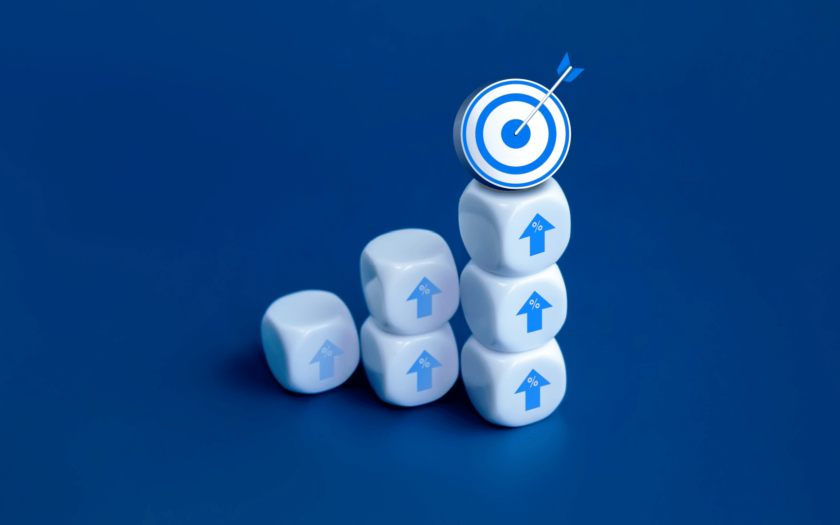If ad spend remains unchanged, the higher CTR (and the corresponding increase in clicks) is balanced by a proportional CPC reduction, resulting in a sixfold increase in (profit on ad spend) POAS.
Dig deeper: Branded keywords: How Google Ads drives up CPCs
Get the newsletter search marketers rely on.
Business email address
Sign me up!
Processing…
See terms.
Leverage effect: Higher profits through operational leverage
As sales increase, EBITDA (earnings before interest, taxes, depreciation, and amortization) and operational profits typically grow at an even higher rate.
This happens because fixed costs remain constant regardless of sales volume, making them less significant as revenue rises.
For example, consider a store with $30,000 in monthly sales and fixed costs of $20,000, resulting in a $10,000 profit.
If sales double to $60,000, the fixed costs remain unchanged at $20,000, leaving a profit of $40,000.
In this case, a twofold increase in sales leads to a fourfold increase in operational profit – an effect known as operational leverage.
Larger-scale advertising and even greater profits
As return on ad spend (ROAS) and profitability improve, companies can invest more in advertising – such as increasing PPC bids or expanding to new platforms.
Higher profits enable them to afford impressions and clicks at previously unprofitable prices, shifting the point of optimal profit and neutral marginal revenue to higher levels.
This advantage allows stronger brands to pay higher CPCs while remaining profitable, further expanding their market presence and pushing less reputable competitors’ ads to lower positions.
As a result, they achieve even greater sales volume, margins, and profits.
How does this translate to numbers?
A strong brand enhances performance marketing efficiency, enabling more aggressive media buying and driving significant revenue and profit growth.
But how significant?
Let’s analyze potential changes using sample data.
For a stronger brand, we assume:
CTR doubles.
Conversion rates double.
Unit prices increase from $800 to $1,000, raising the margin per transaction from $200 to $400 (a twofold increase).
Fixed costs remain $80,000 (10% of revenue for the “no-name” company).
The table below compares company revenue across three scenarios:
Without a brand (column 2).
With a strong brand (column 3).
With a strong brand plus expanded advertising (column 4).
In this example, branding led to a fortyfold increase in revenue and a 316-fold increase in profit – largely driven by increased advertising investment.
However, as shown in the last column of the table, a company without a brand would incur operational losses if it attempted to scale performance marketing in the same way.
In contrast, a strong brand can afford aggressive marketing, pay significantly more for traffic, and still grow its profits.
The figures in the table were chosen for clarity.
Still, even smaller differences in efficiency between branded and non-branded products demonstrate how brand awareness:
Amplifies revenue.
Transforms a barely profitable or loss-making company into a highly profitable business.
If you’d like to test how different values affect the outcome, you can explore the simulation in this Google spreadsheet:
https://docs.google.com/spreadsheets/d/13EQMW2eKGthIEmgoxXdCG7qyNGqMyzk7qLatmbVOLV0/edit?usp=sharing (Create a copy to modify values.)
A well-known brand generates direct traffic
The previous calculations don’t yet account for another key advantage of a strong brand – substantial direct traffic.
Brand awareness drives users to visit a website directly, either by typing its address into their browser or clicking on branded search results, whether organic or paid.
These visits typically convert at higher rates than traffic from marketing campaigns, as they come from users with strong intent.
As a result, direct traffic can generate significant revenue with little to no additional investment.
In the earlier example, assuming a 30% increase in sales from direct traffic, revenue would rise to $41.6 million and profit to $10.16 million – compared to just $20,000 for a company without a strong brand.
Investing in brand marketing pays off
The simulations clearly show that as a brand gains recognition and trust, a multiple-leverage effect emerges.
Higher CTRs, improved conversion rates, the ability to raise prices, and more aggressive advertising all drive profitability – further boosted by direct traffic from loyal customers.
A well-known brand also provides additional advantages, such as spontaneous media interest, easier press placements, and stronger negotiating power with suppliers and in the job market.
Brand growth comes with challenges, such as combating counterfeits and managing reputation risks – issues that lesser-known companies rarely face.
While the simulation assumes fixed costs remain unchanged, significant expansion would inevitably lead to higher expenses.
However, these added costs are far outweighed by the benefits.
Investing in brand awareness:
Delivers measurable returns.
Improves the efficiency of performance marketing.
Unlocks growth opportunities unavailable to weaker brands.
That said, building a brand is more than just running ads (display, video, TV, outdoor, etc.).
It requires a cohesive, strategic approach rooted in audience insights, strong messaging, and creative execution.
Simply showing a “big logo” everywhere won’t build a brand – no matter how many times people see it.
DIg deeper: Why over-bidding on your brand could be hurting your bottom line
